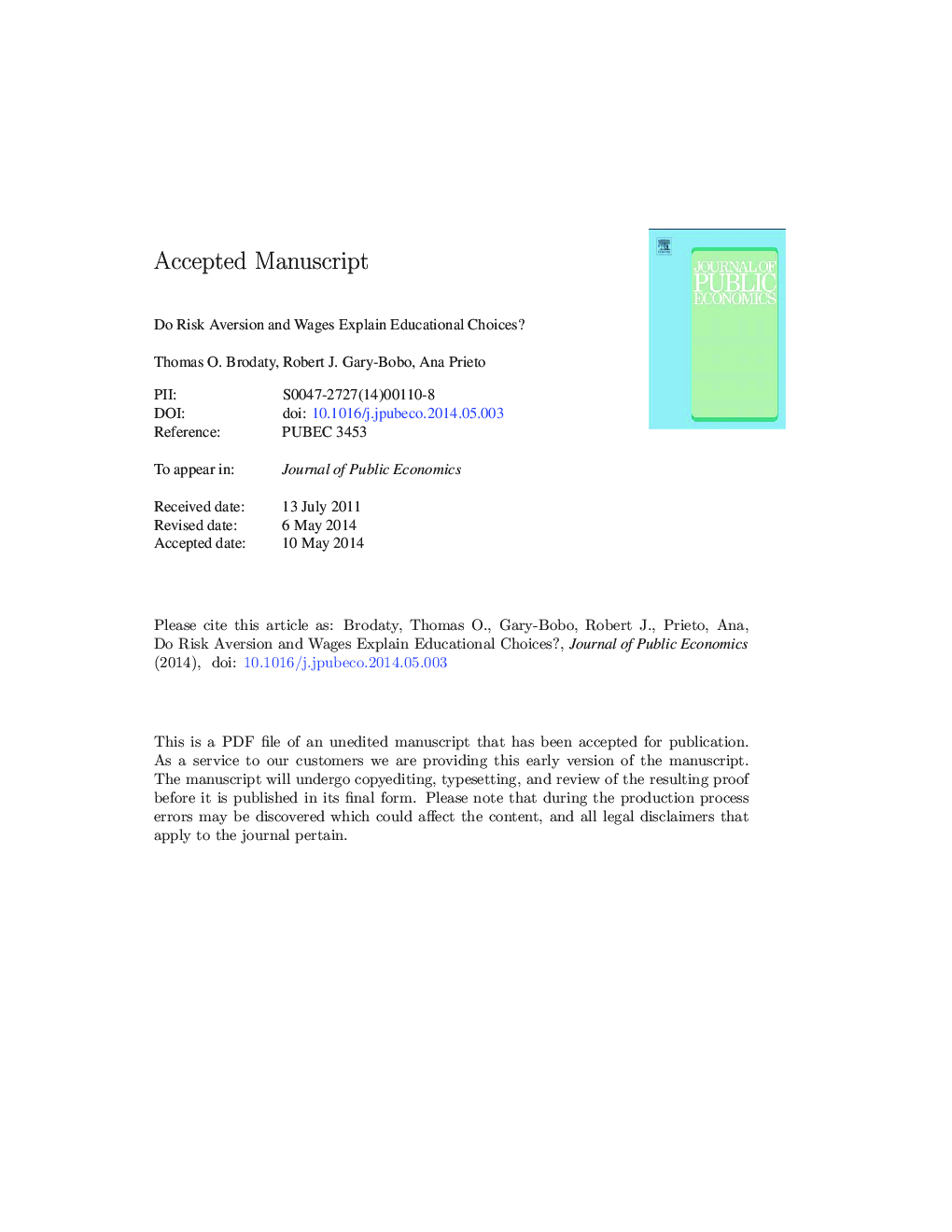| Article ID | Journal | Published Year | Pages | File Type |
|---|---|---|---|---|
| 7370276 | Journal of Public Economics | 2014 | 68 Pages |
Abstract
We study a model in which a student's investment in education maximizes expected utility conditional on public and private information. The model takes future wage risk into account and treats the direct and opportunity costs of education as additional sources of risk. In particular, the time needed to complete a degree is random. The data show that time-to-degree is substantially dispersed, conditional on the highest degree. We find significant and substantial effects of expected returns on individual education choices. The risk affecting education costs and, in particular, the randomness of time-to-degree, also plays an important role in explaining enrollment in higher education. We find precise estimates of the CRRA risk-aversion parameter, between 0.6 and 0.9. Heterogeneity in risk attitudes is significant, even in sub-populations. The sons of professionals bear more risk and are more risk averse than the rest of the sample. Yet, they study more because of higher returns and markedly lower expected investment costs. Simulations show a strong impact of changes in the probability of grade retention on educational achievement.
Related Topics
Social Sciences and Humanities
Economics, Econometrics and Finance
Economics and Econometrics
Authors
Thomas Brodaty, Robert J. Gary-Bobo, Ana Prieto,
